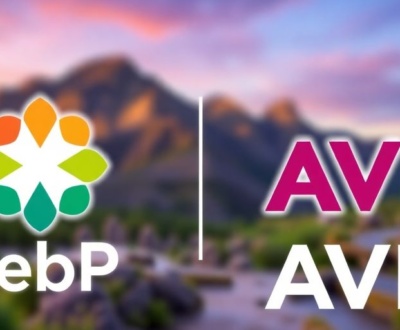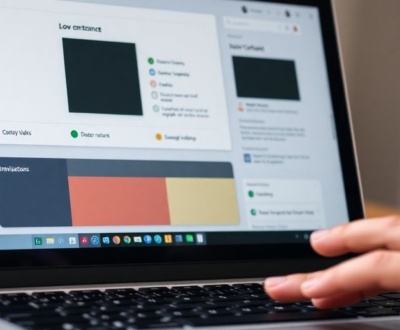So, you’re looking to build a website, and you want it to be fast, right? Like, really fast. And maybe you’ve heard about Gatsby, which is pretty cool for making speedy sites. But then there’s this whole ‘Headless CMS’ thing, and you might be wondering how they fit together. Well, it turns out, combining a Headless CMS with Gatsby is a super smart move for building modern, high-performance websites. It makes things easier for both developers and content creators. Let’s dig into why this combo works so well.
Key Takeaways
- Using a Headless CMS with Gatsby means your website will be quicker and builds will finish faster.
- Gatsby is a React-based tool that needs a content management system to handle all the text and pictures.
- Gatsby makes it easy for developers to learn and use, and it’s built to perform well from the start.
- This combination is great for making static sites with content that changes often, or for building web apps and online stores.
- Picking the right Headless CMS involves looking at how well it works with Gatsby, its cost, and any special needs your project has.
Why Use a Headless CMS with Gatsby?

Okay, so you’re thinking about using Gatsby, which is awesome for building fast websites. But then someone throws around the term "headless CMS," and you’re like, "Huh?" Let’s break it down. Basically, a headless CMS separates the content from how it’s displayed. Think of it like this: the CMS is just a place to store your stuff, and Gatsby is in charge of making it look pretty on your website. Why is this a good thing? Well, a few reasons.
Better Performance and Faster Builds
Gatsby is all about speed, and a headless CMS helps it achieve that. Traditional CMSs can be a bit slow because they have to do a lot of work every time someone visits your site. A headless CMS, on the other hand, just hands over the content via an API. Gatsby can then grab that content and pre-render everything, making your site super fast. It’s like the difference between ordering a pizza and having all the ingredients ready to go – Gatsby just assembles the pizza (your website) really quickly.
Flexibility in Frontend Development
With a traditional CMS, you’re often stuck using its templates and themes. A headless CMS gives you way more freedom. You can use Gatsby (or any other frontend framework) to build exactly what you want. Want to use React? Vue? Svelte? Go for it! The CMS doesn’t care. Plus, you can use the same content for your website, mobile app, or even a smart fridge if you’re feeling ambitious. It’s all about flexibility.
Seamless Content Editing for Non-Developers
Let’s be real, not everyone on your team knows how to code. A headless CMS provides a user-friendly interface for content creators to easily add, edit, and manage content without messing with the code. This means your marketing team can update blog posts, change landing page text, and add new products without needing to bother the developers every time. It’s a win-win for everyone.
Using a headless CMS with Gatsby is like having a super-efficient content engine powering your blazing-fast website. It gives you the best of both worlds: speed, flexibility, and ease of use.
Understanding Gatsby’s Role in Modern Web Development

Gatsby has changed a lot over the last few years. It’s not just a static site generator anymore; it’s a full-blown framework. It’s worth understanding where Gatsby fits in today’s web development landscape.
Gatsby as a React-Based Framework
Gatsby is built on React, which is a popular JavaScript library for building user interfaces. This means if you know React, you’ll feel right at home with Gatsby. Gatsby uses React components to structure your website, making it easy to reuse code and keep things organized. It also uses GraphQL, which lets you pull in data from different sources. Gatsby is known for its speed and performance, which is a big plus in today’s web development world. It helps developers create fast websites and apps.
Why Gatsby Needs a Content Management System
Gatsby is great for building fast websites, but it needs a content management system (CMS) to handle the content. Gatsby pulls data from different sources and turns it into static pages. A CMS helps you manage and update that content without having to mess with the code. Think of it like this: Gatsby builds the house, and the CMS furnishes it. Without a CMS, updating content on a Gatsby site would be a pain. You’d have to rebuild the entire site every time you make a change. A CMS makes it easy for non-developers to update content, which is a big win for marketing teams.
Benefits of Gatsby for Developers
Gatsby offers several benefits for developers. First, it’s fast. Gatsby sites load quickly, which is good for user experience and SEO. Second, it’s easy to use. If you know React, you can pick up Gatsby quickly. Third, it’s flexible. You can use Gatsby to build all sorts of websites, from simple blogs to complex e-commerce sites. Plus, Gatsby has a huge ecosystem of plugins and integrations, so you can easily add new features to your site. Here are some of the key benefits:
- Faster website loading times
- Simplified development process with React
- Extensive plugin ecosystem for added functionality
- Improved SEO performance
Gatsby is a solid choice for developers who want to build fast, modern websites. Its React-based architecture and plugin ecosystem make it a powerful tool for web development.
Key Advantages of Gatsby for Fast Websites
Gatsby is a great choice if you’re aiming for a website that loads quickly and provides a smooth user experience. It’s designed with performance in mind, making it a favorite among developers who prioritize speed and efficiency. Let’s explore some of the key advantages that Gatsby offers for building fast websites.
Gentle Learning Curve for Developers
One of the best things about Gatsby is that it’s built on React, a popular JavaScript library. Most front-end developers are already familiar with React, which means they can pick up Gatsby relatively quickly. Gatsby works a lot like a React app, using reusable components to make development easier. Plus, integrating Gatsby with a headless CMS simplifies using GraphQL, allowing developers to easily pull data from different sources.
Created With Performance In Mind
Slow websites are a major turn-off. Fortunately, Gatsby sites are known for being significantly faster than others. Gatsby follows Google’s PRPL architectural pattern, which helps boost both mobile and desktop experiences. It also simplifies development by compiling Webpack configuration to build your sites, and it prefetches resources to reduce load times. This results in a blazing-fast experience for users. You can also get better SEO with Gatsby because it uses server-side rendering to generate static pages at build time.
Easier Maintenance and Deployment
Maintaining a Gatsby site is generally easier compared to traditional websites. Since Gatsby generates static files, deployment is straightforward. You can host your Gatsby application anywhere because it’s just serving static files, thus cutting on hosting expenses. Plus, with a headless CMS integration, managing content becomes more efficient, allowing for seamless updates and changes without affecting the site’s performance or development.
Gatsby’s static site generation offers enhanced security. Because there’s no direct connection to a database or sensitive user data, the risk of vulnerabilities is significantly reduced. This makes Gatsby an excellent choice for websites that need to prioritize security.
When to Combine Gatsby with a Headless CMS
Gatsby is great, but it’s not always the perfect solution for every project. Knowing when to bring in a headless CMS can seriously boost your project’s potential. It’s all about matching the right tools to the right job. Let’s look at some scenarios where Gatsby and a headless CMS really shine together.
Building Static Sites with Dynamic Content
Gatsby excels at building static sites, offering incredible speed and performance. But what if you need to incorporate content that changes frequently, like blog posts, news articles, or product listings? That’s where a headless CMS comes in. Instead of hardcoding content, you can manage it in the CMS and have Gatsby pull it in during the build process. This way, you get the best of both worlds: the speed of a static site and the flexibility of dynamic content. Think of it as having your cake and eating it too, but with less sugar and more SEO benefits. This is where a headless CMS architecture can really shine.
Developing Progressive Web Applications
PWAs are all about delivering app-like experiences in the browser. Gatsby is already well-suited for PWA development, but a headless CMS can take it to the next level. By using a CMS to manage the application’s content and data, you can easily update the app without having to redeploy the entire thing. This is especially useful for PWAs that rely on frequently updated information, such as e-commerce apps or news readers. Plus, a CMS can provide features like user authentication and content personalization, which can further enhance the user experience.
Creating High-Performance E-commerce Platforms
E-commerce sites demand speed and reliability. No one wants to wait around for product pages to load. Gatsby, with its static site generation capabilities, can deliver that speed. But managing product catalogs, inventory, and customer data can be a real headache. A headless CMS can streamline these processes, providing a central hub for managing all your e-commerce data. You can then use Gatsby to build a blazing-fast storefront that pulls data from the CMS. This combination can lead to increased conversion rates and happier customers. It’s a win-win!
Choosing the Right Headless CMS for Your Gatsby Project
Choosing a CMS for Gatsby isn’t just about features; it’s about finding a system that fits your workflow, keeps build times manageable, and makes content updates smooth. I’ve seen projects where the wrong CMS choice turned small content edits into a frustrating process, slowing down development and making Gatsby feel like a burden. But I’ve also seen how the right CMS can make Gatsby feel effortless, letting developers focus on building rather than fighting content management issues. If you’re building a Gatsby project in 2025, a headless CMS is probably your best bet.
Popular Headless CMS with First-Class Gatsby Integrations
Focus on general-purpose CMSs with first-class Gatsby integrations and popularity among Gatsby users. These CMSs often have dedicated plugins or starters that simplify the integration process. Consider these options:
- Contentful: Known for its flexibility and robust API.
- Strapi: An open-source, Node.js-based CMS that gives you full control over your data.
- Sanity: Offers a real-time content editing experience and a powerful query language.
Evaluating Price Points and Scalability
Price is always a factor. Some headless CMS options are free for small projects but scale up in cost as your needs grow. Others offer enterprise-level pricing with more features and support. Scalability is also key. Can the CMS handle a large volume of content and traffic without slowing down your Gatsby builds? Consider these points:
- Pricing Models: Understand the pricing structure (e.g., per user, per content entry, API calls).
- Scalability: Check if the CMS can handle increasing content and traffic.
- Free Tier: Explore if a free tier is sufficient for initial development and testing.
Considering Specialized Project Requirements
Some projects have unique needs that require a specialized CMS. For example, if you’re building an e-commerce platform, you might want a CMS with built-in e-commerce features. Or, if you need to manage a large library of digital assets, a CMS with strong digital asset management (DAM) capabilities might be a good fit.
Choosing the right CMS depends on several key factors, including project requirements, team workflow, scalability, and ease of integration. When determining the best CMS for your Gatsby project, keep these considerations in mind.
Integrating a Headless CMS with Gatsby
Okay, so you’ve picked out your headless CMS and you’re ready to hook it up to your Gatsby site. This is where the magic really starts to happen. It might seem a little daunting at first, but trust me, once you get the hang of it, it’s pretty straightforward. Let’s break it down.
Connecting Gatsby to Your Chosen Headless CMS
First things first, you need to install the appropriate Gatsby source plugin for your CMS. Most popular headless CMS options have official or community-supported plugins. For example, if you’re using Contentful, you’d install gatsby-source-contentful. If you’re using WordPress as a headless CMS, you’d use gatsby-source-wordpress. These plugins act as a bridge, fetching data from your CMS and making it available to Gatsby during the build process.
Once the plugin is installed, you’ll need to configure it in your gatsby-config.js file. This usually involves providing API keys, content IDs, and other credentials so Gatsby can access your content. Make sure to keep these credentials secure! Don’t commit them directly to your repository; use environment variables instead.
Leveraging GraphQL for Content Querying
Gatsby uses GraphQL to query data. After connecting your CMS, Gatsby will automatically create a GraphQL schema based on your content models. This means you can use GraphQL queries in your React components to fetch exactly the data you need. It’s super efficient because you’re not over-fetching data, which can really speed things up.
To write these queries, you’ll use Gatsby’s useStaticQuery hook or the graphql tag in your page components. You can explore the available data and schema using Gatsby’s built-in GraphiQL explorer, which is accessible during development at http://localhost:8000/___graphql. This tool is a lifesaver for figuring out the structure of your data and testing your queries.
Implementing Real-time Content Updates
One of the coolest things about using a headless CMS with Gatsby is the ability to implement real-time content updates. This means that when content editors make changes in the CMS, those changes can be reflected on your site almost instantly, without needing a full rebuild.
To achieve this, you’ll typically use webhooks. Most headless CMS platforms allow you to configure webhooks that trigger a Gatsby build whenever content is updated. You can set up these webhooks to point to Gatsby Cloud, which will automatically rebuild and deploy your site when it receives a webhook event. This is a game-changer for content-heavy sites that need to stay up-to-date.
Setting up webhooks can be a bit tricky, especially when dealing with authentication and security. Make sure to follow the documentation for your CMS and Gatsby Cloud carefully. It’s also a good idea to test your webhooks thoroughly to ensure they’re working as expected.
Optimizing Gatsby Performance with a Headless CMS
Okay, so you’ve got Gatsby hooked up to your headless CMS. Awesome! But how do you make sure it’s running fast? It’s not just about having the right tools; it’s about using them the right way. Let’s talk about some strategies to really crank up that performance.
Strategies for Faster Build Times
Faster build times mean faster deployments and happier developers. Nobody wants to wait around forever for a site to build. Here’s what you can do:
- Optimize your GraphQL queries: Only fetch the data you actually need. Over-fetching is a common culprit for slow builds. Think of it like ordering a pizza – you wouldn’t order every topping if you only like pepperoni, right?
- Use incremental builds: Gatsby Cloud (more on that later) and other tools can help you only rebuild what’s changed since the last build. This can drastically cut down on build times, especially for large sites.
- Code splitting: Break your code into smaller chunks that can be loaded on demand. This reduces the amount of JavaScript the browser has to download and parse upfront.
One thing I learned the hard way is that keeping your dependencies up-to-date can also help. Outdated packages can sometimes have performance issues that slow things down. So, regularly check for updates and keep your project lean.
Image Optimization and Lazy Loading
Images are often the biggest performance bottleneck on a website. Here’s how to handle them:
- Use optimized image formats: WebP is your friend. It offers better compression than JPEG or PNG, resulting in smaller file sizes without sacrificing quality. Coderslab leverages Gatsby to build SEO-optimized static websites.
- Implement lazy loading: Only load images when they’re about to come into view. This prevents the browser from downloading a bunch of images that the user might not even see. It’s like only putting gas in your car when the tank is low, not filling it to the brim every time.
- Use responsive images: Serve different image sizes based on the user’s screen size. This ensures that users on mobile devices aren’t downloading huge images that are meant for desktop screens. Gatsby’s
gatsby-imageplugin makes this pretty easy.
Utilizing Gatsby Cloud for Enhanced Performance
Gatsby Cloud is a platform specifically designed to host and deploy Gatsby sites. It offers several features that can significantly improve performance:
- Global CDN: Gatsby Cloud uses a content delivery network (CDN) to serve your site from servers all over the world. This ensures that users get the fastest possible loading times, no matter where they are.
- Incremental builds: As mentioned earlier, Gatsby Cloud supports incremental builds, which can dramatically reduce build times.
- Preview deployments: Gatsby Cloud lets you create preview deployments for every pull request. This allows you to see how your changes will look and perform before you merge them into the main branch. This is super helpful for catching performance issues early on.
Here’s a quick comparison of build times with and without Gatsby Cloud:
| Feature | Without Gatsby Cloud | With Gatsby Cloud | Improvement |
|---|---|---|---|
| Initial Build | 15 minutes | 15 minutes | – |
| Incremental Build | 5 minutes | 1 minute | 80% |
Choosing the right headless CMS is important, but optimizing how you use it with Gatsby is where you really see the performance gains. By focusing on efficient data fetching, image optimization, and leveraging tools like Gatsby Cloud, you can build websites that are not only fast but also a joy to use. Remember, a fast website is a happy website!
Conclusion
So, that’s the rundown on Gatsby and headless CMSs. It’s pretty clear that putting these two together makes a lot of sense for building fast, modern websites. You get the speed and good looks from Gatsby, and the easy content handling from a headless CMS. This combo helps teams work better, too, since developers and content creators can do their own thing without stepping on each other’s toes. If you’re looking to build something that loads super quick and is easy to update, this setup is definitely worth checking out. It just makes things simpler and faster for everyone involved.
Frequently Asked Questions
Does Gatsby have its own CMS?
Gatsby is a tool that helps build super fast websites using React. It’s like a special engine that takes your website content and turns it into a speedy, ready-to-go site. It is not a content management system (CMS) itself, meaning it doesn’t have a built-in way to add or change your website’s words and pictures. Instead, Gatsby works best when you connect it to a separate CMS, especially a ‘headless’ one. This way, Gatsby focuses on making your site fast, while the CMS handles all your content.
What CMS should I use with Gatsby?
Choosing the best CMS for your Gatsby project depends on what you need. Think about how complex your content is, how big your team is, and if you need to grow a lot. Some popular headless CMS options that work great with Gatsby include Contentful, Sanity, Strapi, and DatoCMS. These are good choices because they make it easy to connect with Gatsby and manage your content smoothly.
What is CMS in Gatsby?
When we talk about ‘CMS in Gatsby,’ we’re usually talking about a ‘headless CMS.’ This is a system that stores your website’s content (like text, images, and videos) but doesn’t worry about how it looks on your website. Gatsby then pulls this content from the headless CMS and uses it to build your super-fast website. It’s like having a separate library for all your content that Gatsby can easily access.
Is Gatsby good for SEO?
Yes, Gatsby is very good for SEO (Search Engine Optimization). Because Gatsby builds your website’s pages ahead of time, search engines like Google can easily read and understand all your content. This helps your website show up higher in search results. Also, Gatsby makes websites load very quickly, which is another important factor for good SEO and a better experience for people visiting your site.
What is a headless CMS?
A headless CMS is a content management system that only focuses on storing and delivering content. It doesn’t have a built-in way to display that content on a website. Instead, it sends the content through an API (a way for different computer programs to talk to each other). This is great for Gatsby because Gatsby can then take that content and build a super-fast website, while the headless CMS just handles the content storage.
When should I use Gatsby?
Gatsby is a good choice for many types of websites, especially those that need to be very fast and secure. It’s great for blogs, online stores, marketing sites, and progressive web apps (PWAs), which are websites that act like mobile apps. However, for very large, complex websites that change all the time and need real-time updates for every user, other tools might be a better fit.
About this blog
We are a digital marketing company with a focus on helping our customers achieve great results across several key areas.
Request a free quote
We offer professional SEO services that help websites increase their organic search score drastically in order to compete for the highest rankings even when it comes to highly competitive keywords.









